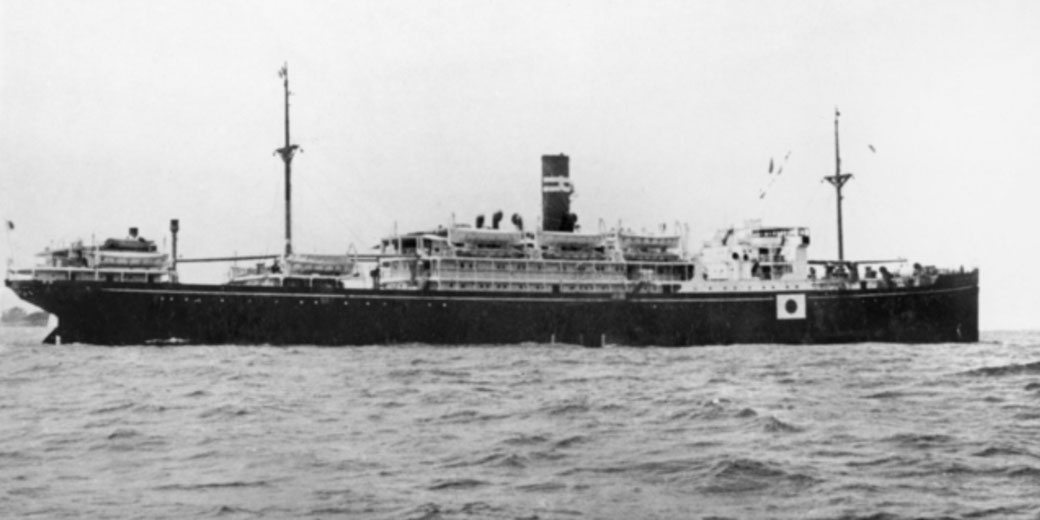The tragic sinking of the Montevideo Maru: Australia’s worst maritime disaster in history

The term "Montevideo Maru" might not ring a bell for many people, but for Australia, it represents the most severe maritime disaster in its history.
On 1st July 1942, the sinking of the Montevideo Maru, a Japanese prisoner transport ship, resulted in the tragic death of over 1,000 Australian prisoners of war (POWs) and civilians.
Yet, it remains relatively unknown compared to other historic wartime events. This article explores the tragic story behind the Montevideo Maru.
What was the Montevideo Maru?
The Montevideo Maru was initially a Japanese merchant ship. However, with the outbreak of World War II, the Japanese Imperial Navy commandeered it as a transport vessel.
It was in Rabaul, on the island of New Britain in Papua New Guinea, where the ship's tragic journey began.
Rabaul, under Australian administration, was overrun by Japanese forces in January 1942, leading to the capture of many Australian soldiers and civilians.
The ill-fated journey
In June 1942, the Japanese decided to move their prisoners from Rabaul to Hainan Island, China.
Onboard the Montevideo Maru were approximately 1,053 Australian POWs and civilian internees. Most of the military personnel belonged to the 2/22nd Battalion, a part of the Australian 8th Division, known as "Lark Force."
Civilians included government officials, missionaries, and merchants who had been residing in Rabaul at the time of the invasion.
The ship departed Rabaul on 22nd June 1942. The conditions onboard were notoriously appalling, with the prisoners cramped into the ship's hold with minimal food, water, or sanitation facilities.
This inhumane treatment of POWs was unfortunately not uncommon in the Pacific War theater.
The sinking
On 1st July 1942, the Montevideo Maru sailed into the path of the American submarine, the USS Sturgeon.
The American submarine crew, unaware of the ship's human cargo, fired torpedoes at what they thought was a standard enemy vessel.
The Montevideo Maru quickly sank, taking all those on board down with it. None of the Australian prisoners survived, representing the greatest loss of life in a single incident in Australian wartime history.
The aftermath of the sinking
News of the sinking did not reach Australia until after the war ended. Many families, with members among the ship's prisoners, lived in uncertainty for years about the fate of their loved ones.
Some hoped that the prisoners had been moved to other camps, as the Japanese had destroyed many of the records.
Recognition of the disaster was slow. It was not until 2012, the 70th anniversary of the sinking, that a national memorial was dedicated at the Australian War Memorial in Canberra.
However, the story of the Montevideo Maru remains lesser-known, overshadowed by other wartime narratives.
Finding the wreck
The exact site of the wreck was unknown for over 80 years. However, using new underwater technology, a team of researchers located the Montevideo Maru on the 18th of April 2023 in the South China Sea.
The wreck was lying at a depth of more than 4,000 m (13,000 ft). To date, the Montevideo Maru tragedy serves as a reminder of the brutal realities of war and a poignant symbol of Australia’s wartime loss.
This maritime disaster holds a significant place in Australian history and demands to be remembered along with the other significant events of World War II.
What do you need help with?
Download ready-to-use digital learning resources
Copyright © History Skills 2014-2025.
Contact via email
With the exception of links to external sites, some historical sources and extracts from specific publications, all content on this website is copyrighted by History Skills. This content may not be copied, republished or redistributed without written permission from the website creator. Please use the Contact page to obtain relevant permission.





